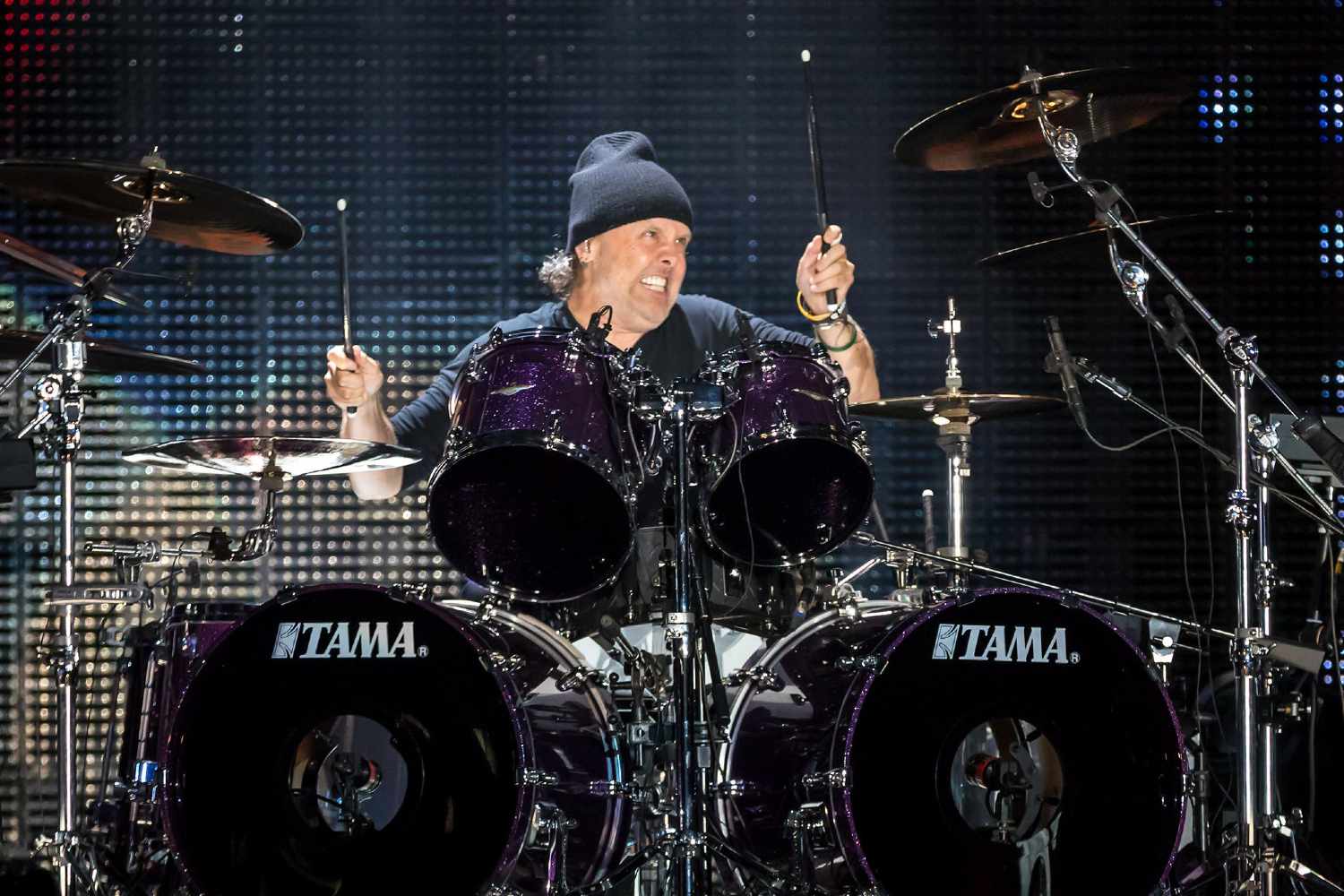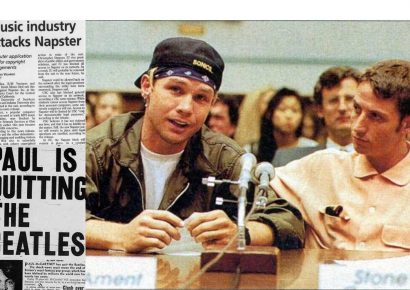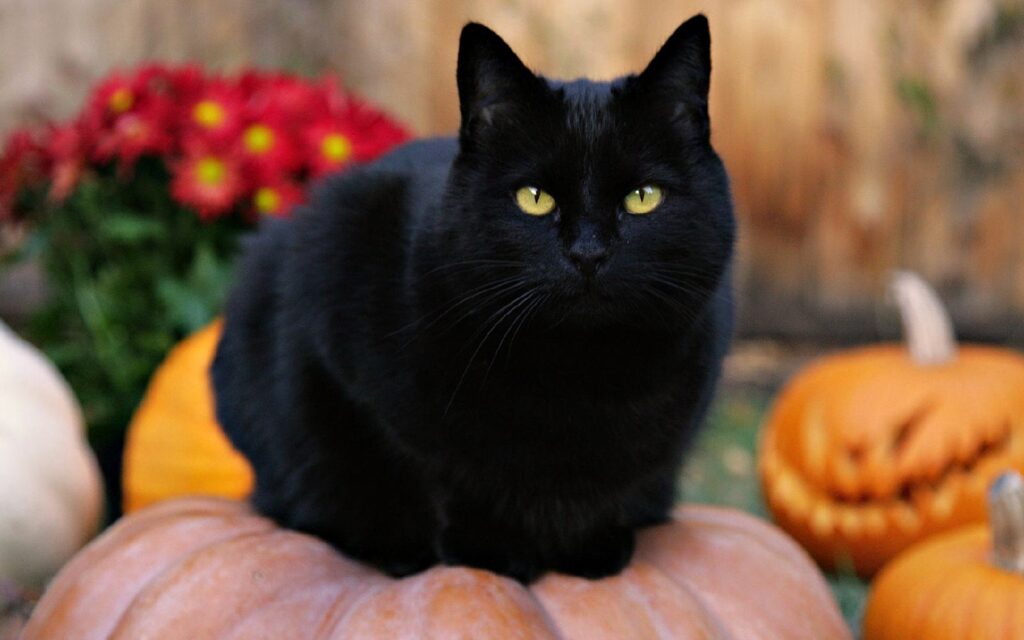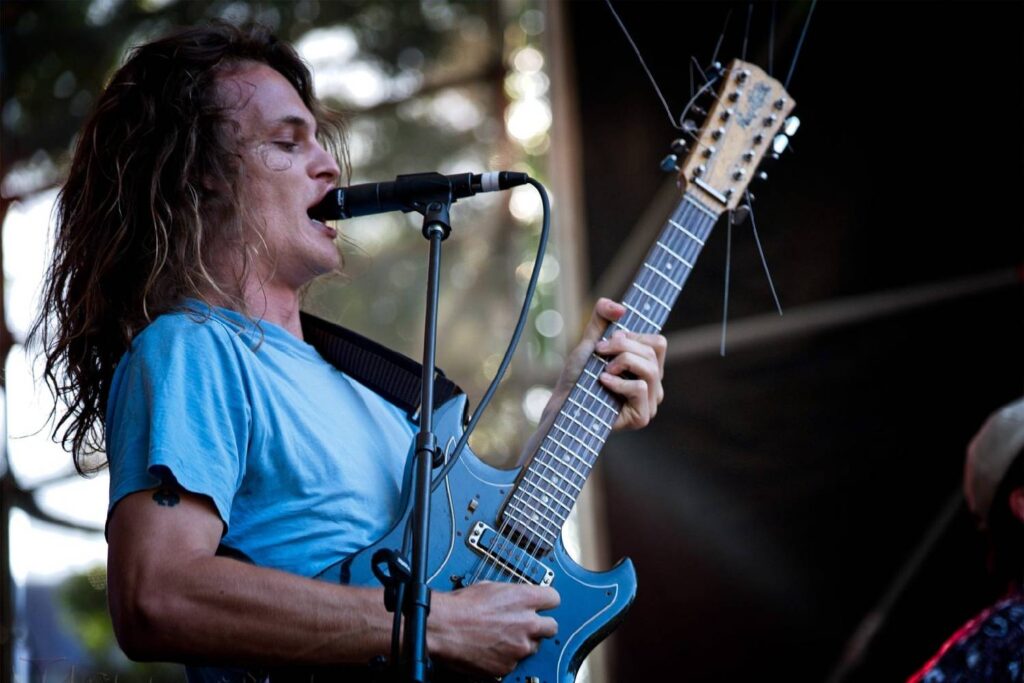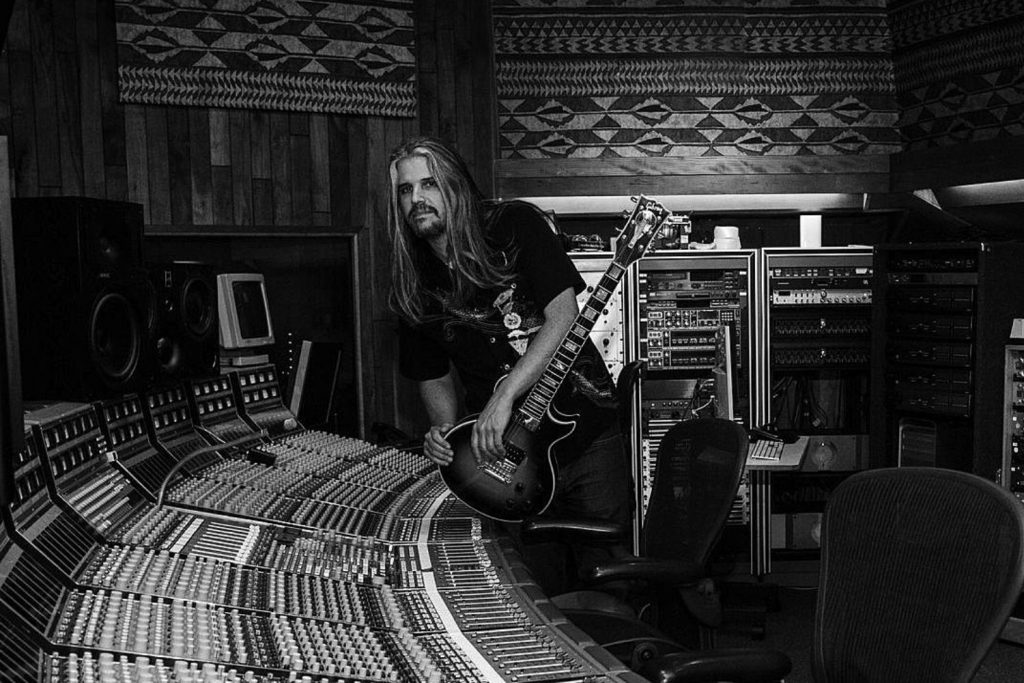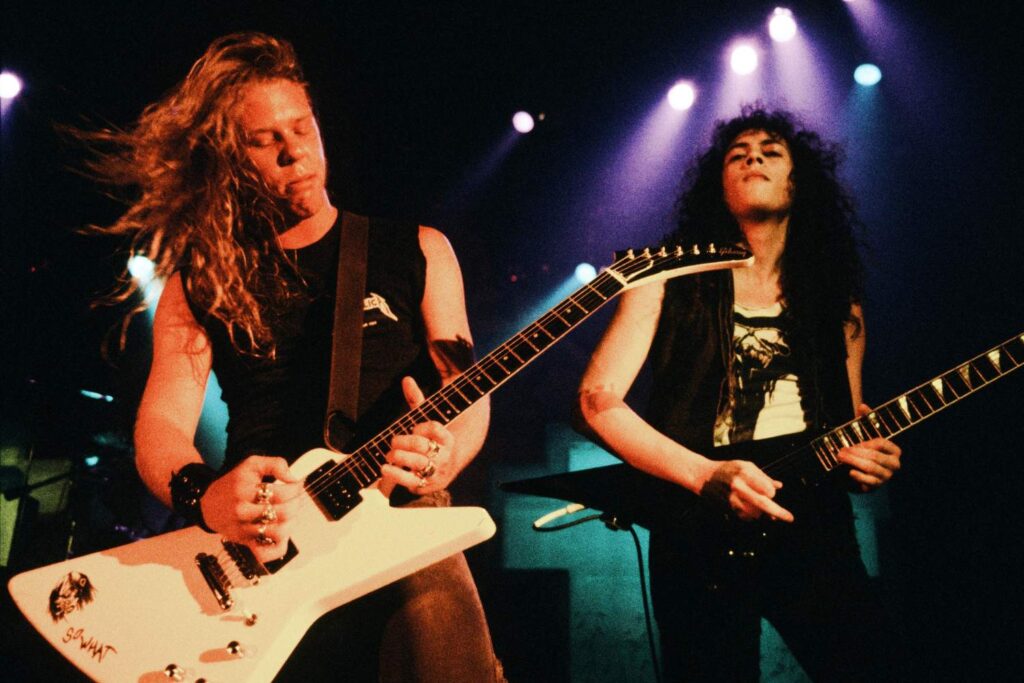Legendary drummers are one thing - but who inspires the legends?
The journey of rock’s greatest famous drummers had to start with the drum work on a record or concert. We look at who most inspired six of them to pick up their sticks and shape their sound.
Lars Ulrich
As the backbone of Metallica, Napter’s enemy number one, Lars Ulrich is one of history’s most famous drummers. In September 2020, influential US radio program The Howard Stern Show on Sirius XM was holding a debate on the greatest drummer of all-time. Listeners short-listed John Bonham of Led Zeppelin and Neil Peart of Rush.
One suggested Lars Ulrich should make the final decision. The Metallica power-slammer went on air the next day by video satellite.
Read up on all the latest features and columns here.
He spoke about the tempo-beaters that he liked, and who inspired his technique when he started playing the kit his grandmother gave him as a 13-year old. These included Deep Purple’s Ian Paice, AC/DC’s Phil Rudd and Slayer’s Dave Lombardo.
He told Stern’s listeners how he met Peart, it was in 1984. He was 20 years old “with not a pot to piss in.”
Metallica and Rush shared a manager in Cliff Burnstein.
“I had drum questions about gear and this and that. (Cliff) goes, ‘Neil loves to talk to younger drummers.’ He goes, ‘Call Neil. He wants to hear from you.’ And it was, like, ‘Huh?!’”
Ulrich made the call. “We spoke 30, 45 minutes on the phone and were geeking out on drums.” He became Ulrich’s mentor, sharing his encyclopaedic knowledge of drums, his distinctive sound and technical ability.
One of his instructions was how to take from influences: “Copying one style can never be original, copying many styles often is original… to develop an original style, don’t copy one drummer, copy twenty! I copied a hundred.”
Lars was so awestruck by Peart he had no problems doing AC/DC, Purple and Black Sabbath covers but never a Rush song. It was holy ground.
But despite his reverence and affection for Peart, on the Stern show he declared: “Between Neil and between John — no disrespect — I’ll have to go with John Bonham.”
He cited Bonzo’s work on “When the Levee Breaks” from Led Zeppelin IV (1971).
“The drums are big, thunderous, ambient. He’s a little behind [the beat], and he’s got that groove.”
Ulrich also spoke how Bonham could produce the goods even on an un-Zeppelin track like “All My Love” from 1979’s In Through the Out Door. “[Those two songs] are the blueprint for that pocket that I continue to want to bring to Metallica,” he said. “That’s just my inspiration.”
Phil Rudd
Many of heavy rock’s famous drummers are awed by how Phil Rudd (real name: Phillip Hugh Norman Witschke Rudzevecuis) at the way he keeps things simple. Charlie Benante of Anthrax said few AC/DC cover bands nail it because they don’t “get” Rudd. He told the Talk Louder podcast, “The way Phil Rudd approaches the songs and his meter, most drummers wanna fill in a song.
“Phil doesn’t fill [laughs] that much, and when he does fill, it’s this nice, tasty [simple fill], and you just feel it. So he doesn’t overdo it because Phil understands the role in the band.
“They all understood the role in the band, and the focus was Angus [Young, guitar]. ‘So Angus is gonna do what he does, and we’re gonna stay back here, and we’re just gonna keep it [simple].’”
Tommy Lee of Motley Crue calls Rudd “a human drum machine. You could probably clock that guy and I’ll bet you it doesn’t move, he’s that solid!”
Little wonder, then, that Rudd got the AC/DC gig in 1974 after their first jam together. By 13, Rudd was under the spell of The Beatles’ Ringo Starr, The Stones’ Charlie Watts, Deep Purple’s Ian Paice, The Small Faces’ Kenny Jones, Free’s Simon Kirk and Mountain’s Corky Laing – “precise but effective”.
Rudd dropped out of school to do various apprenticeships (including as an electrician) to pay off a $250 kit by Japanese brand Boston (roughly worth $3,000 in today’s money) and which he took to his early Melbourne bands Buster Brown and Coloured Balls.
To Rudd, Ringo has the edge, even today. “The Beatles were the biggest thing then, but he’s still doing it. He’s hot, really special. He’s always had this right attitude.”
Jon Farriss
Growing up in the musical Farriss family, Jon Farriss was surrounded by all kinds of music – from The Beatles and Rolling Stones to the jazz experiments of Weather Report to Motown, soul and R&B legends. That allowed him to drive through with rock, funk and disco in INXS. When they were touring America in the 1980s, they were among the first white bands to start drawing black crowds.
“Need You Tonight” has one of the sexist dance rhythms on a rock record, with Jon using five snare sounds to make one, and three or four bass drum crunches mixed into one. Being self-taught, Jon created a style of his own. Learning the soft martial art tai chi as a teenager, Farriss used its lessons in breathing to deliver power strokes and a circular motion to his playing.
“Tai chi is round and flowing, it’s done very slowly and you virtually put yourself into a meditative place when you do it.”
He was a pioneer of incorporating electronics and samplers with his live arsenal, initially utilising the YamahaRX5 and two Akai S900s.
In 1988 when he was hanging out with Mick Jagger in his Sydney hotel – he was in Australia on his solo tour – the Rolling Stone played him demos for their next album Steel Wheels and told him which songs had been inspired by INXS.
Nile Rodgers wanted to work with INXS on “Original Sin” (they did it in one take at New York’s Power Station) after seeing them in a small club in Toronto performing “Yum Yum” off his flop solo album and being knocked out by the “cutting sound” Jon got from his bass drum.
Ringo Starr was Jon’s favourite all-time drummer. “I learned to play to Beatles records. I was quite obsessed. His simple style was easy to grasp. He had a definite shape in what he did, but with Ringo it was as much what he left out as what he kept in.”
In February 2013, Jon was invited to play with Ringo’s All Starr Band at their Sydney show, impromptu and with no rehearsals. In what would have been a surreal moment, he was playing on Ringo’s kit while the ex-Beatle was out front singing “With a Little Help from My Friends”.
The next day, Jon flew with the band to Melbourne to hang out. Ringo’s manager asked if he wanted to join the Allstars. But Jon replied, “I think having three drums would be too much!”
Tommy Lee
Three skinsmen made an impact on the Motley Crue and rap metal Methods of Mayhem rhythm driver. Born in Greece, the son of a serving American soldier and beauty queen, he moved to America as a one year old in 1963.
Given sticks when he was four and his first drum kit in his early teens, Lee grew up in a ‘70s white rock diet of Led Zeppelin, Van Halen, Kiss, AC/DC, Cheap Trick and Sweet.
He dropped out of school to focus on music. At that stage, there were specific famous drummers who shaped his approach to power playing and showmanship. Terry Bozzio, of Frank Zappa and Missing Persons fame, had a penchant for a kit that spelled m-a-s-s-i-v-e. It grew to 4 bass drums, 15 toms, 9 hi-hat and bass drum pedals and 50 Sabian Radia cymbals.
Watching famous drummers Phil Rudd and Van Halen’s Alex Van Halen gave him lessons on power and timing.
At 16 Lee went to see guitarist Pat Travers, and had his life transformed by how his drummer Tommy Aldridge (later with Ozzy and Whitesnake) spun his sticks and grabbed his cymbals. Overnight his kit was always going to have double bass.
But Zeppelin’s John Bonham was the man for him, “hands-down”.
“Most people will talk about how heavy his foot was and how laid back his snare drum was, but not a lot of people talk about his cymbal placement,” Lee told David Frangioni of All Access Hits.
“He doesn’t really play a ton of cymbals, but when he does, he always seems to pick that right moment.”
In the studio, the way Zep mic’d and compressed the cymbals gave them an even extra yosah sound. He elaborated to All Access Hits: “That’s something that a lot of people don’t talk about. Other than his amazing timing and just his groove, man — the way he laid back on that big heavy foot and the snare drum way, way on the backside.
“I mean, that’s money. The first time I heard that, I’ll never forget it. I was sitting there… so I must have played Physical Graffiti nine million times, just flipping out, like, ‘Jesus, listen to this dude.’”
Nick Mason
Nick Mason’s love for both jazz and rock allowed him to provide the subtle rhythms and drive for the experimentalism and freakouts of Pink Floyd and his ‘60s psychedelic retread Saucerful Of Secrets.
In 1964 Mason was studying architecture at London’s Regent Street Polytechnic when he formed an early Floyd incarnation, Sigma 6, with flatmate Roger Waters, Bob Klose and Richard Wright.
Eric Clapton’s new band Cream played at the Polytechnic two years later. Mason looked at Ginger Baker with his double bass and jazzy cross-rhythms and had a life changing moment.
“I wouldn’t be here today if it wasn’t for Ginger Baker,” Mason wrote in his autobiography Inside Out. “When the curtain opened … and there was Ginger, Eric and Jack, I thought, that’s what I’d like to be, and that was it.”
The Jimi Hendrix Experience also played the college, leading to Nick’s admiration for the way his rhythm stick Mitch Mitchell jumped from jazz to rock, from intricate to pile driving, totally perfect for Hendrix.
Later Mason and Mitchell became friends when the Experience and Floyd toured together.
Mason adopted Keith Moon’s set up of double bass drums and multiple toms, and the out-of-box approach of US jazz drummer and band leader “Chico” Hamilton who used a cello as lead instrument.
In 1982, Mason and the Police’s Stuart Copeland were invited to appear on Jeremy Clarkson’s TV motoring show The Grand Tour.
Earnings from Floyd’s 250 million record sales had seen Nick amass a huge collection of v. expensive cars, including a Ferrari estimated at costing £40 million (A$76.2 million).
The night before, Mason and Copeland had gone out to dinner to prepare for the show, and worked out that Mitch Mitchell, who died in 2008 from cancer and an immune system disorder, was their favourite drummer of all time. Copeland said straight-facedly, “Well, Jimi was Mitch’s guitarist!” to guffaws from the audience.
“In terms of style and rock drummers I like, it was Mitch Mitchell,” Mason told Music Radar in 2010. “Whether it’s behind the beat or not, it’s so lazy, but it worked perfectly under Jimi and that slightly jazzy thing. There’s no one else like him.”
Ben Gillies
Remembering the Newcastle he grew up as “very working class”, Ben Gillies was expected to follow in his father David’s plumbing business. But after accompanying his old man on a job to unblock a drain, he knew a change of career was to be contemplated.
Gillies’ manic personality naturally drew him to the drums, which he began playing in 1988. As a kid, his mother Annette recalls he was either racing around crazy or flaked out exhausted on the lounge sofa. At 8 he saw the drummer in the Newcastle High School band and was besotted.
“I was just drawn to it,” he recalled in an ABC podcast. “We all have that rhythmic thing built into us. Maybe from the heartbeat when you’re in the water.”
Annette got him a $75 kit and some lessons. Like Lizzo, Celine Dion, Dolly Parton, Iva Davies, Gwen Steffani, Johnny Depp, Tommy Lee, Trent Reznor, Julia Roberts, Samuel L. Jackson and Bill Clinton, the left-handed Ben got his start in a marching band.
In this case it was in 1993 playing quad drums in the Marching Koalas, made up of Newcastle students. “It was fun but that drum was so heavy!”
Ben’s father’s great vinyl collection from the 1970s included Led Zeppelin IV. “When the penny dropped how great Led Zeppelin were, I became quite obsessed.”
Silverchair started out doing Zeppelin, Rainbow and Black Sabbath covers. He was initially breaking 16 to 18 sticks at each gig. But it was John Bonham that stood out for him, even now.
He named one of his sons Bonham, and by 1996 had seen the Zeppelin movie The Song Remains The Same thirty times.
Keep reading about The Song Remains The Same here.
